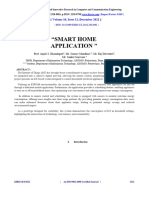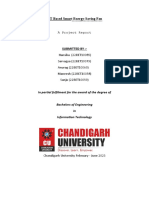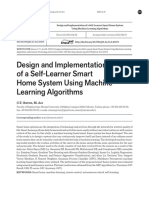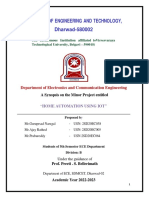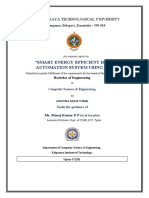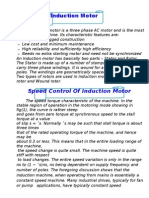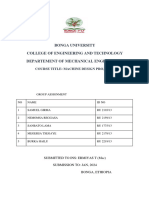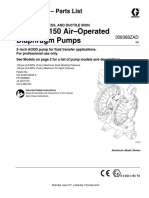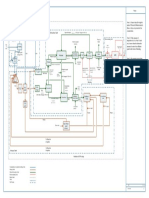0% found this document useful (0 votes)
12 views14 pagesConference 03
The document discusses a proposed system for energy optimization in smart home automation through behavior-based automated control, focusing on air conditioning systems. It highlights the use of AI and anomaly detection algorithms to adapt to user behavior, thereby reducing energy consumption and enhancing comfort. The effectiveness of the system is validated through simulations and real data, showcasing its potential to improve energy efficiency in smart homes.
Uploaded by
prakash.v8056920880Copyright
© © All Rights Reserved
We take content rights seriously. If you suspect this is your content, claim it here.
Available Formats
Download as PDF, TXT or read online on Scribd
0% found this document useful (0 votes)
12 views14 pagesConference 03
The document discusses a proposed system for energy optimization in smart home automation through behavior-based automated control, focusing on air conditioning systems. It highlights the use of AI and anomaly detection algorithms to adapt to user behavior, thereby reducing energy consumption and enhancing comfort. The effectiveness of the system is validated through simulations and real data, showcasing its potential to improve energy efficiency in smart homes.
Uploaded by
prakash.v8056920880Copyright
© © All Rights Reserved
We take content rights seriously. If you suspect this is your content, claim it here.
Available Formats
Download as PDF, TXT or read online on Scribd
/ 14





